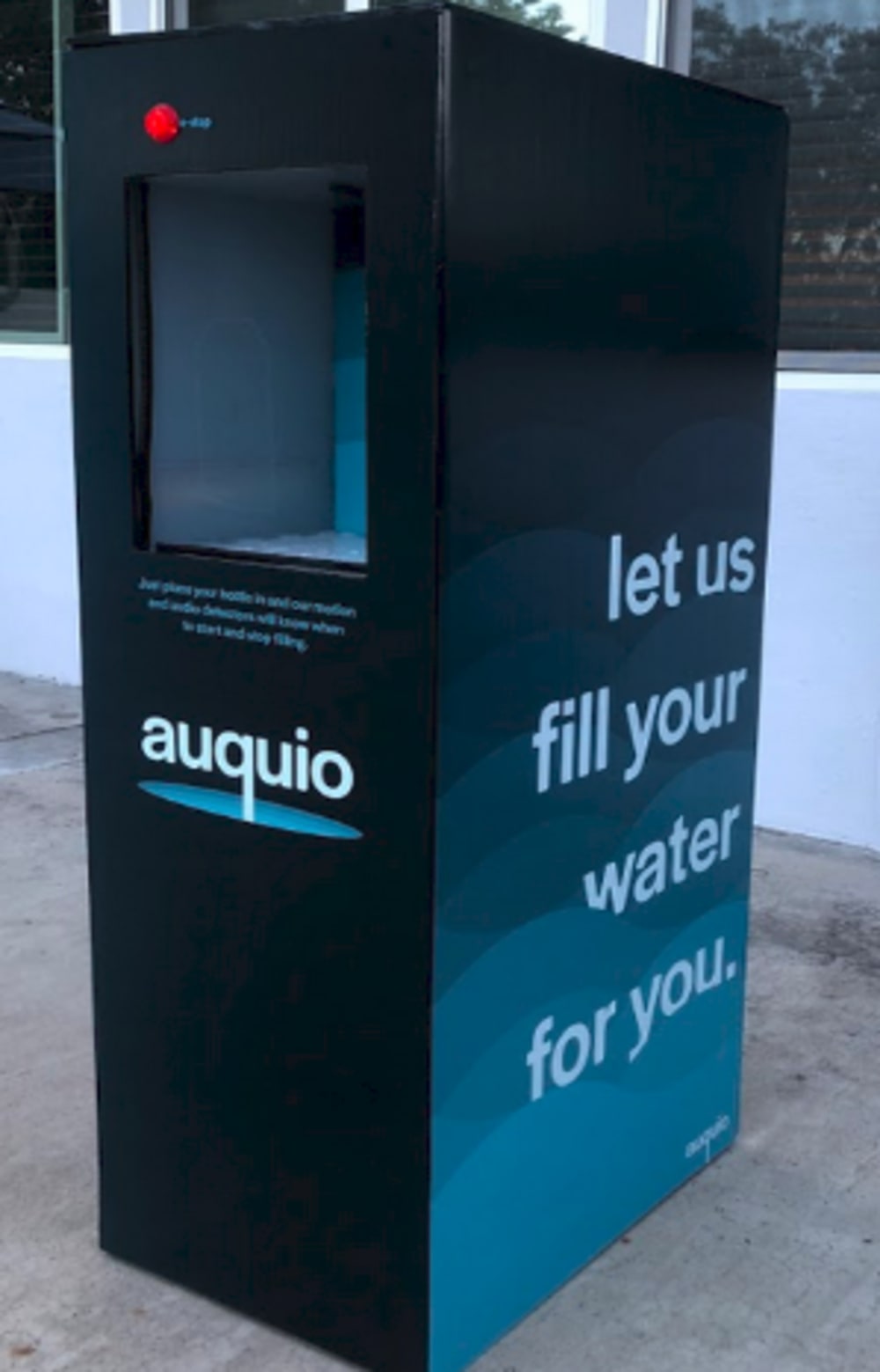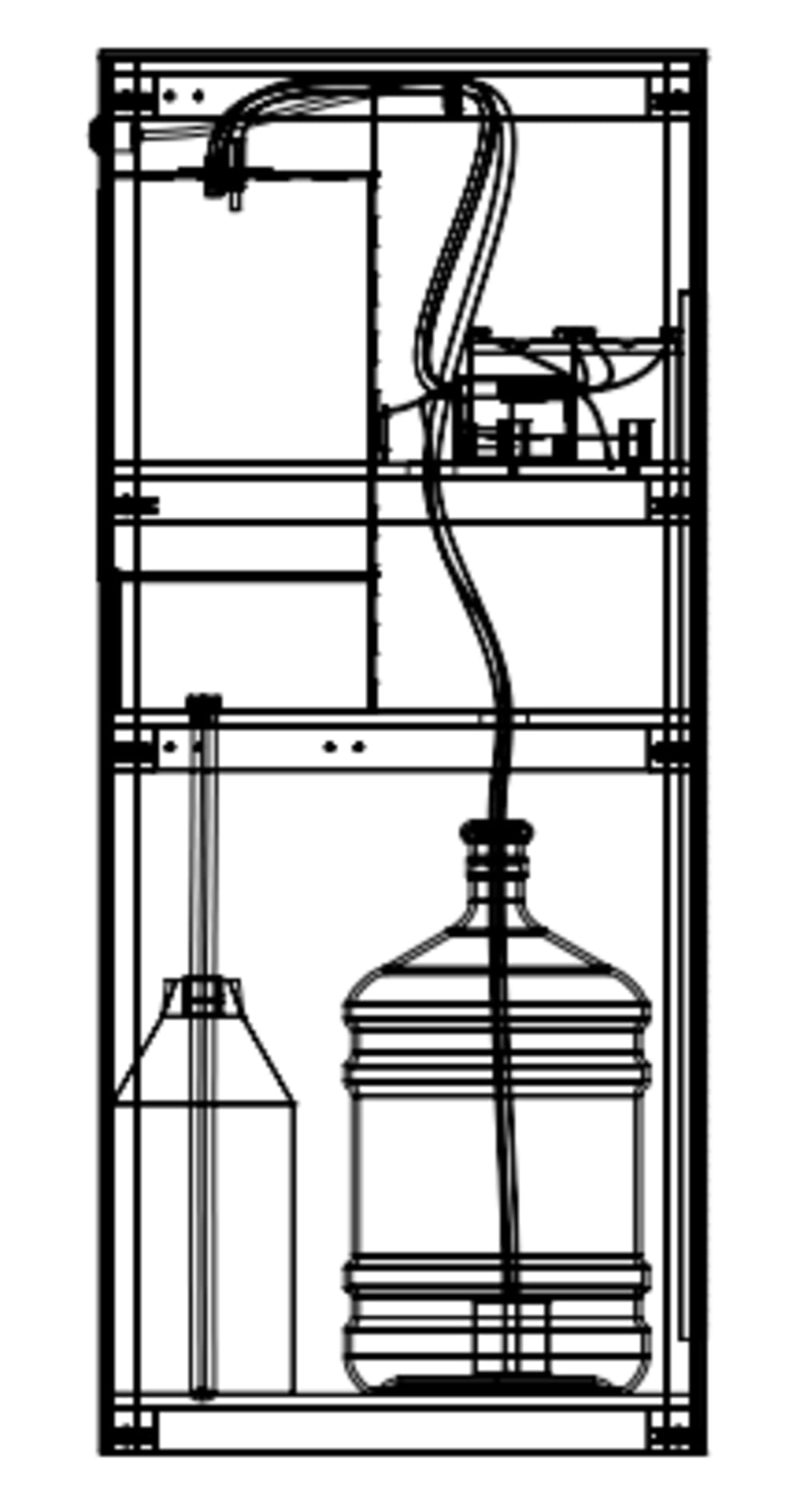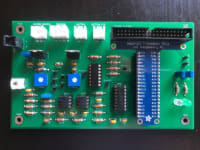
Auto H20 is a team that started in the capstone program at San Diego State University. Four mechanical engineers, three electrical engineers, two computer engineers and one graphic designer student developed a full scale prototype of auquio. Auquio is a portable automatic water bottle filling station that uses an acoustic method to stop the flow of water. This prototype has been tested to be compatible with 20 to 40 oz reusable water bottles made from glass, plastic, aluminum and stainless steel.
When a compatible bottle is placed into the fill zone, the infrared sensor sends a signal to the Raspberry Pi, initiating a new fill. Water is pumped from an internal water supply to a nozzle located at the top of the fill zone. A condenser microphone and the tubing is located at the nozzle above the water bottle. The condenser microphone picks up the cavity resonant frequencies and sends the signals to the printed circuit board. The signals are passed through an active, 4-pole, Sallen-Key lowpass butterworth filter with the 3dB cutoff frequency of 2.5 kHz. The analog sound then gets converted to digital data using a MCP3008, a 10bit ADC chip, before further being processed by the Raspberry Pi.
The underlying principle of this product is the analysis of changes in cavity resonant frequencies coming out from the bottle over time .The signal picked up from the condenser microphone carries this cavity resonant frequency. The Raspberry Pi analyzes this data for every 0.2 seconds by performing a Fast Fourier Transform. The maximum frequency detected within the spectrum of this time frame is stored for later analysis. When it gathers enough data, a curve fit function of these data points will be found, and the slope of the curve will be calculated. When the Raspberry Pi detects the slope delta threshold, it will signal the system to stop the water. This product accommodates acoustic interferences such as people talking, car alarms, and planes flying overhead. This portable ADA compliant design accommodates users and reduces water wasted.
No target frequency was identified for every bottle but a similar pattern of exponential frequency growth was discovered. The design prototype, including the graphic design, was completed at a cost of $830.44 and over 2,500 hours of labor.
The design was reviewed for both mechanical and electrical failure. A factor of safety of 1.7 was identified for the system. Additionally, there is a drain to catch spilled water and store it in an internal gray water tank. An emergency stop button is available to stop the flow of water. Once the emergency stop button is released and the bottle is removed the next bottle can be inserted thus resuming standard operations without additional inputs. The pump and motor driver are powered by 12V DC and the PCB is powered by a power bank.
Video
-
Awards
-
 2021 Top 100 Entries
2021 Top 100 Entries
Like this entry?
-
About the Entrant
- Name:Lydia Keaty
- Type of entry:teamTeam members:Nathan Behymer, Ahmed Bohamad, Alberto Gomez-Flores, Lydia Keaty, Brian Leenerts, Nguyen Pham, Erick Pompa, Ivan Santana, Stephanie Suarez, Mohamad Zeidan
- Software used for this entry:Solidworks, audacity, Matlab, comsol, KiCAD, LTSpice, Thonny
- Patent status:none








